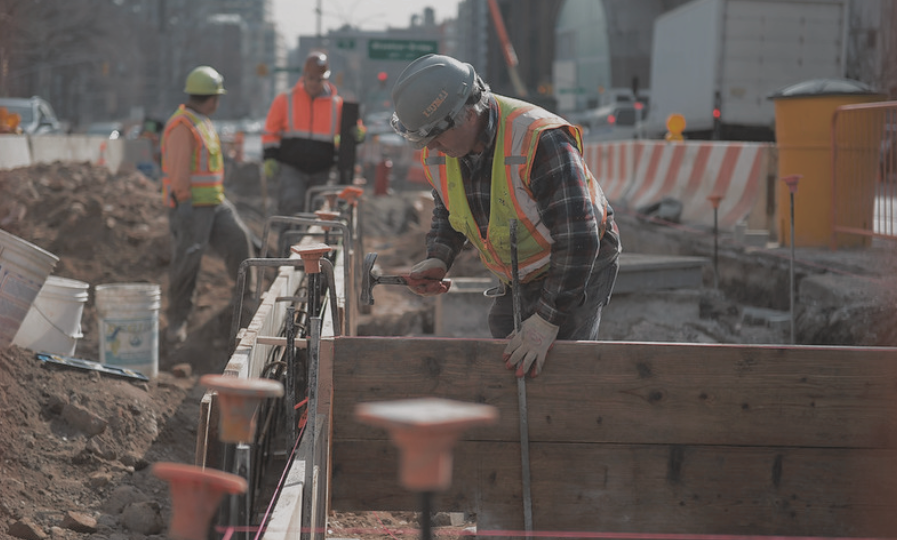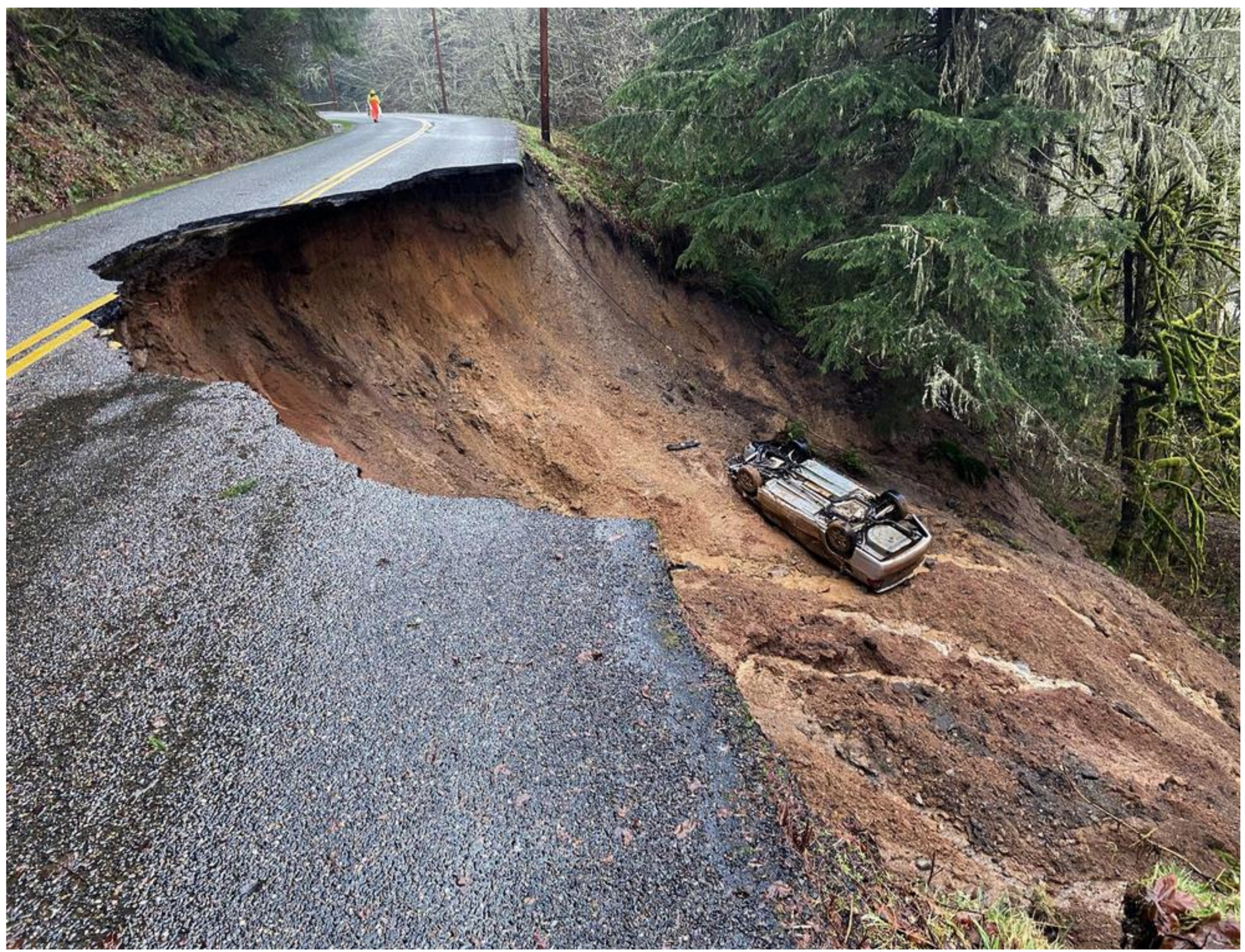Foundation and earth structures
Résumé de section
-

Course OverviewThis course covers the analysis and design of foundations, slopes, and earth-retaining structures. Students will learn to evaluate soil behavior under different loading conditions, apply stability theories, and design geotechnical solutions for real-world engineering challenges. The course combines theory with practical applications, including lab work and case studies, to prepare students for professional practice in civil and geotechnical engineering.A strong foundation in Strength of Materials 1 and Soil Mechanics 1 is required. These courses provide essential knowledge of stress-strain relationships, soil classification, and basic geotechnical principles, ensuring students are prepared for advanced topics like shear strength and slope stability analysis. -
Have a look at the mind map of our class to get an overview of what we will cover this semester.

-
 Before beginning this course, students should have a solid understanding of the following concepts:- Strength of Materials 1: Stress-strain, beam bending, safety factors- Soil Mechanics 1: Soil classification, effective stress, compaction, permeabilityTo assess these two prerequisites, a written test will be administered during a class session. If the score obtained is insufficient, you will be directed to a more detailed course to strengthen your knowledge.
Before beginning this course, students should have a solid understanding of the following concepts:- Strength of Materials 1: Stress-strain, beam bending, safety factors- Soil Mechanics 1: Soil classification, effective stress, compaction, permeabilityTo assess these two prerequisites, a written test will be administered during a class session. If the score obtained is insufficient, you will be directed to a more detailed course to strengthen your knowledge. -
 The content of the course is organized around the following main areas:Chapter 1: Plasticity and Shear Strength of Soils: This chapter introduces Mohr's Circle for stress analysisand the Mohr-Coulomb failure criterion to predict soil behavior. Students will explore shear strengthmeasurement techniques, including direct shear and triaxial tests, and examine differences between drained and undrained conditions. Practical exercises focus on interpreting lab data for design applications.Chapter 2: Stability of Slopes and Embankments: This section analyzes landslide mechanisms, includingrotational slips and planar failures. Stability methods like Fellenius' and Bishop's approaches are applied tocompute safety factors, accounting for pore pressure and soil heterogeneity. Mitigation techniques, such asdrainage and soil nailing, are discussed through case studies.Chapter 3: Earth Pressures: Students learn to calculate lateral earth pressures on retaining structures usingRankine, Boussinesq, and Prandtl theories. The chapter covers at-rest, active, and passive states, emphasizingtheir role in designing walls, sheet piles, and excavations. Real-world examples demonstrate how pressuredistributions influence stability.Chapter 4: Shallow and Deep Foundations: Design principles for shallow foundations (bearing capacity,settlement) and deep foundations (piles, caissons) are covered. Students will use Terzaghi's theory and in-situtest data to size footings and estimate pile capacity, ensuring safe load transfer to the ground.Chapter 5: Retaining Structure: The final chapter focuses on designing gravity walls, cantilever walls, andsheet piles. Stability checks against sliding, overturning, and bearing failure are emphasized, with practicalexamples illustrating design steps and material selection
The content of the course is organized around the following main areas:Chapter 1: Plasticity and Shear Strength of Soils: This chapter introduces Mohr's Circle for stress analysisand the Mohr-Coulomb failure criterion to predict soil behavior. Students will explore shear strengthmeasurement techniques, including direct shear and triaxial tests, and examine differences between drained and undrained conditions. Practical exercises focus on interpreting lab data for design applications.Chapter 2: Stability of Slopes and Embankments: This section analyzes landslide mechanisms, includingrotational slips and planar failures. Stability methods like Fellenius' and Bishop's approaches are applied tocompute safety factors, accounting for pore pressure and soil heterogeneity. Mitigation techniques, such asdrainage and soil nailing, are discussed through case studies.Chapter 3: Earth Pressures: Students learn to calculate lateral earth pressures on retaining structures usingRankine, Boussinesq, and Prandtl theories. The chapter covers at-rest, active, and passive states, emphasizingtheir role in designing walls, sheet piles, and excavations. Real-world examples demonstrate how pressuredistributions influence stability.Chapter 4: Shallow and Deep Foundations: Design principles for shallow foundations (bearing capacity,settlement) and deep foundations (piles, caissons) are covered. Students will use Terzaghi's theory and in-situtest data to size footings and estimate pile capacity, ensuring safe load transfer to the ground.Chapter 5: Retaining Structure: The final chapter focuses on designing gravity walls, cantilever walls, andsheet piles. Stability checks against sliding, overturning, and bearing failure are emphasized, with practicalexamples illustrating design steps and material selection -

-
Test 1
-

-
Test 2
-

-
Final Exam Test
-
-
A selection of reference works is recommended to deepen the theoretical and technical concepts covered in the course:
-
Costet, J. & Sanglerat, G. – Cours pratique de mécanique des sols, Dunod, 1981.
→ A comprehensive reference on the principles of soil mechanics applied to engineering. -
Phillipponat, G. & Hubert, B. – Fondations et ouvrages en terre, Collection Blanche BTP, 1997.
→ A specialized work on the design of foundations and the stability of geotechnical structures. -
Schlosser, F. – Éléments de mécanique des sols, Presses de l’École des Ponts, 1997.
→ A detailed approach to soil behavior and its modeling. -
Schlosser, F. – Exercices de mécanique des sols, Presses de l’École des Ponts, 1995.
→ A collection of solved exercises for practice and exam preparation. -
Olivari, G., Sanglerat, G., Cambou, B. – Problèmes pratiques de mécanique des sols, Dunod, 1987.
→ Case studies and practical applications based on real-world situations. -
Publications OPU, Algeria – Geotechnical Series.
→ Manuals adapted to the local context, often used as resources for tutorials or examinations.
Geotechnical simulation software:
-
GeoStudio (SLOPE/W) for slope stability analysis.
https://www.bentley.com/lp/geotechnical-geostudio-free-trial-request/ -
Plaxis 2D for the modeling of foundations and retaining structures.
https://www.bentley.com/software/plaxis-2d/
-


